405
Relationships of Biodiversity, Water, and Energy
The dilemmas of using hydroelectric energy
César RojasInstituto Alexander von Humboldt Diana LaraInstituto Alexander von Humboldt John Jairo RamírezUniversidad de Antioquia Magnolia LongoUniversidad de Bogotá Jorge Tadeo LozanoTerritorial tensions prompted by the uses of the energy sector in Colombia
Dams that produce electric energy1 occupy around 770km2 of the territory.
78% of hydroelectric power plants are focused in the Magdalena-Cauca hydrographic area. This area also has the greatest economic activity and human settlement in the country, a fact that implies transformation of existing natural ecosystems2. The operation and expansion of hydroelectric power plants is a challenge for the technical, social, and environmental management of the country.Hydroelectric energy is key for Colombia's development. Including biodiversity in project planning and operation could strengthen the competitiveness of the sector.
One of the major uses for water in Colombia is electric energy generation3. Actually, 71.12%4 of the energy produced in the country is generated in hydroelectric power plants. The supply of energy in the scenario of continuous growth therefore relies on hydroelectric dams. According to the Mining and Energy Planning Unit (UPME for its initials in Spanish) for the first semester of 2015, the monthly electric energy generated reached 5412.23 GWh, 3.5% more than 20145. To satisfy energy demands for 2029, current capacity of electricity generation must grow by 50%4.
Building dams for hydroelectric energy has both positive and negative effects on the social, economic, and ecological aspects of the territory. On the other hand, hydroelectric dams depend on the ecosystem services provided by basins. These services include water provision, erosion and sedimentation control, and soil protection, among others7-11.
Biological communities from terrestrial and aquatic ecosystems that are flooded by the construction of dams or belong to adjacent territories show changes in composition, structure, and functioning. For this reason, the construction of hydroelectric dams has been related to changes and declines in the dynamics of the basin and ecosystem services offered by the surrounding area. Additionally, dam construction has been linked to environmental deterioration: deforestation, water cycle alteration, transformation or loss of habitats, and reduced hydrobiological resources7,12-14, all of this without considering the direct effects of operation. However, there are also positive processes that arise from hydroelectric dams. These include diminished sediment discharge, formation of new habitats, and flood control (flow and pulse dynamics that derive from the construction of the dam)15.
Environmental costs produced by electric energy generation have been partially estimated to reach 587 COP/ MWh, taking into consideration some externalities of the operation and construction phases16. Conversely, the benefits supplied by river basins regarding water quality represent savings around 0.059 million COP/year17 for the sector. Thus optimum quality water provision, which may be produced for example by areas of natural parks, ensures up to 50% of demand18.
Certainly, territorial strategies that include appropriate forms of biodiversity management must be incorporated to the sector to guarantee its sustainability and competitiveness19-23. It is likewise indispensable to develop strategic sectorial and environmental planning for an integrated management of the basin so the supply of ecosystem services may be guaranteed 24-26. Planning must consider both the environmental costs caused by hydroelectric production and its benefits. In other words, biodiversity may be integrated to hydroelectric projects through orderly inventories, appropriate practices for negative impact mitigation (from construction through operation), and long-term monitoring activities in intervened and neighboring areas 27-29.In this way, hydroelectric energy would be regarded as a sector committed to leading and proposing compensation practices of ecosystem processes in the areas affected by dams through activities such as ecological restoration, rehabilitation, information production, and conservation 30-33.
Hydrographic subzone demand and water use for generating electric energy by hydrographic area (millions of m3/year)
Source: Ideam (2015)
Ríos principales
Zonas hidrográficas
Áreas hidrográficas
Capitales de departamento
Embalses
SUBZONE DEMAND
0
Less than 100
100 to 200
200 to 500
Greater than 500
Use in hydroelectric power
Hydroelectric power plants
Small hydroelectric power plants
Total use of hydroelectric power
Returns (Used water that returns to water sources)
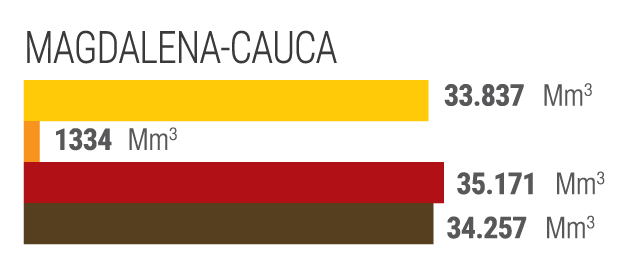


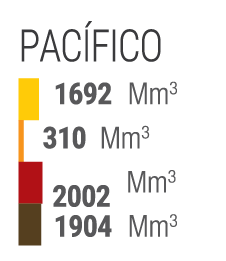
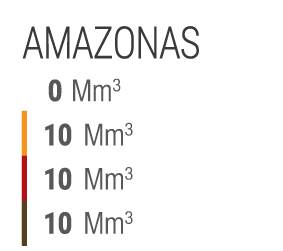
Natural ecosystem multifunctionality in comparison to ecosystems intervened by hydroelectric power projects.
ECOSYSTEM SERVICES
SUPPORT
1State of habitats and biodiversity 12,34
REGULATION
2Climate regulation (amount of greenhouse gases retained or emitted)35-37
3Water regulation (amount of water stored and influences of hydrological regime)11
4Protection against erosion 38
5Mitigation of natural risks (flooding risks) 35
PROVISION
8Generation of energy
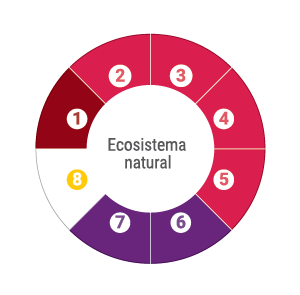
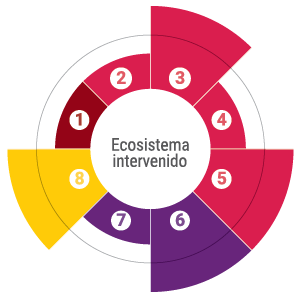
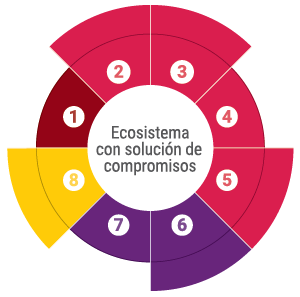

ECOSYSTEM SERVICES AND HYDROELECTRIC DAMS
From the initial phases of construction to the functioning of hydroelectric projects, environmental compromises arise from changes in soil use and impacts on middle and lower parts of the basin because changes in water flow affect the quality and quantity of ecosystem services. Although dams are converted into places of tourism and recreation, regulate water flow, and control flooding, they also reduce water quality and increase downstream erosion. The trade-offs formed by the impacts and benefits of hydroelectric energy generation must be balanced in order to achieve an appropriate management of the accumulative impacts on basins.